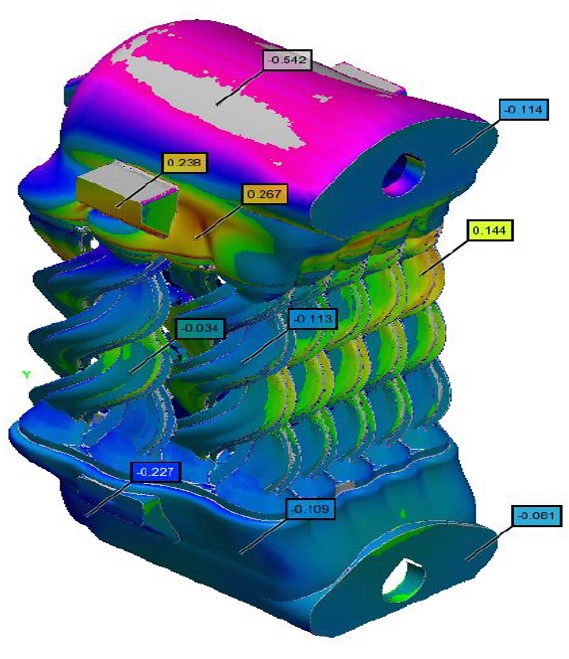Using the Design Freedom of Additive Manufacturing for Tube Heat Exchangers
The tube component of a single pass shell and tube heat exchanger was re-designed to utilise the geometrical complexity enabled by AM resulting in the consolidation of a ~40 part assembly into one component.
Background
Shell and tube heat exchangers are usually comprised of tens of components welded together. The geometry of the tubes connecting the inlet and outlet plenums is usually limited to straight tubes. The production of components with complex channels in additive manufacturing (AM) can be a challenge in terms of manufacturability and inspection. Powder can be trapped in the channels, and residual stresses can distort the components.
MTC's Technologies
- Design for additive manufacturing
- Metal laser powder bed fusion
- Wire electro discharge machining
- CNC machining
- Non-destructive inspection
MTC's Solution
- AM has been utilised to design and manufacture a new heat exchanger tube core design with 33 helicoidal channels to increase the length of heat transfer and fins to increase the surface area.
- Use of the capabilities of Autodesk Fusion 360 to generate the structures.
- Demonstrator component produced in Ti6Al4V without internal support structures.
- Developed a new inspection procedure for additive manufacturing components, to inform each step of the part production.
MTC's Specialities
- Identification of the opportunities for additive manufacturing application
- Design optimisation to leverage the capabilities and limitations of the manufacturing technology
- Non-conventional machining
- Definition of metrology & inspection procedures.
The Outcome
- An AM single pass shell and tube heat exchanger with improved tube profiles.
- AM component produced avoiding the usage of support, reducing the post-processing needed.
- Improvement in the understanding of the behaviour of complex metal powder bed fusion from the dimensional perspective, thanks to the development of the inspection procedures.
Benefits to the Client
- Consolidation of ~40 parts into a single component.
- Validation of the end-to-end build and post-process processes and evaluation of the data generated.
- Identification of issues in the component, such as trapped powder, by the use of advanced inspection methods.
- Greater understanding of the geometrical distortion in this type of component
"Our collaboration with MTC has been key to achieving what has been previously thought impossible. As we push the limits of knowledge we can only do this with the capability that MTC brings."
Andy Harris, Engineering Manager, Autodesk
More Information
Technical details regarding this case study including reports and files are available on the NCAM Knowledge Hub.

